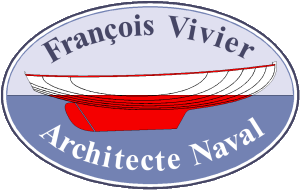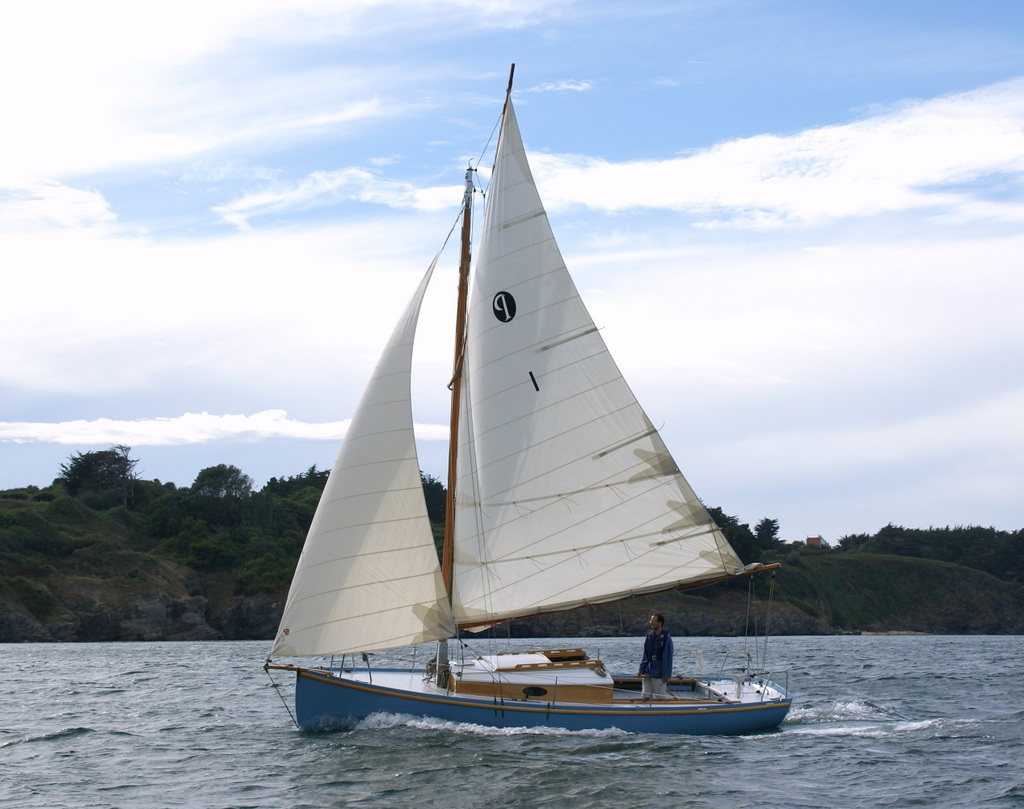Classic keel-boat, excellent performance, four berths for coastal cruising, the architect’s yacht!
Image already added
Displayed prices include VAT (if applicable) and shipping costs.
Hull length : 7.49 m
Waterline length : 6.85 m
Breadth : 2.50 m
Waterline breadth : 2.07 m
Draught: 1.15 m
Lightweight (incl. motor): 1850 kg
Lead ballast: 600 kg
Sail area: 33.8 m²
Recommended outboard motor: 6 hp
Max outbord motor: 10 hp
Design category/crew: B6
Building time : 2 200 hours
Pen-Hir was born out of a desire for a true coastal cruising boat that was capable of spending a fortnight on board. The first Pen-Hir was built by the Icarai boatyard for my personal ownership. I wanted to offer a moderately sized sailing boat that was easy to manoeuvre, suitable for single-handed sailing and did not require a diesel engine or any of the equipment that makes today’s boats both large and expensive. A small boat is both more enjoyable and less of a hassle. Pen-Hir is the result of four years of thought. I chose a profile in the spirit of the boats of Brest and Carantec areas, with a vertical stem and a short counter stern. She is rigged as a gaff sloop with a jib tacked onto a short bowsprit. A more modern Bermuda rig is also possible.
At 7.5 metres, Pen-Hir remains a trailerable boat, weighing the same as a Dragon class. She is fitted with two lifting eyes, which allow her to be launched using a quay crane. The mast is mounted on a tabernacle and can be lowered using the boat’s own equipment.
The interior layout is similar to that of the Méaban, but with more space, a decent galley, and a semi-enclosed toilet area. The mast is stepped over a reinforced open bulkhead, which allows easy access to the fore berths.
Around ten Pen-Hirs have been built or are under construction in France, Germany, Switzerland, Belgium and the USA. Grand-Largue boatyard, which delivered a Pen-Hir to Norway in 2023, is able to build other units.
A new 2023 version
Following a new order for a Pen-Hir at the Grand-Largue boatyard, the Pen-Hir plans have been modified to include the following main improvements:
- Design category B instead of C, obtained by closing the space under the cockpit side deck and the side spaces of the engine well. The companionway threshold has been raised by 50 mm. Note that it is now possible to stow the beaching legs in a cockpit locker. For those who mainly intend to sail in coastal waters in a tidal area, the beaching legs can still be stowed under the side deck of the cockpit, but the boat will then remain in category C.
- The geometry of the engine well has been improved. The engine can be turned to facilitate manoeuvring in port. It is possible to fit a 6 to 10 hp outboard engine (only the 6 hp engine can be tilted).
- The sail plan is unchanged, but many details of the rigging have been improved, taking into account the architect’s 12 years of sailing experience on his personal Pen-Hir. This makes solo sailing easier.
Finally, the boat’s plans have been modelled in 3D, which has enabled a complete overhaul of the construction manual, with Appendix 4 now featuring more than 60 pages of 3D views of all stages of the boat’s assembly.
A classic lateral plane
All traditional yachts have a classic keel with the rudder attached at the aft. On modern boats, we always try to reduce the wet area and, therefore, to have a fin keel and a separated rudder. On Pen-Hir, I was very concerned about both performances and the ability to dry out on legs, which makes it possible to avoid calling in modern marinas. I made drag calculations, which show that the number of appendages is a significant factor. In other words, a classic keel-rudder is one appendage only, whereas many modern sailing boats have 3 (keel and 2 rudders). A classic keel also gives a more effective lateral resistance, particularly at slow speed, thus ideal for manoeuvring under sail in confined waters. Finally, the short classic keel, with the tiller at mid-cockpit and a well-canvassed rig, is an excellent compromise for a boat requiring easy drying out. In addition, it dramatically reduces the risk of rudder damage. When sailing on Pen-Hir, I was delighted to see its speed and ability to windward, similar to a modern Marconi rigged yacht.
At the owner’s request, the draught may be modified to cope with local mooring conditions. A design with 1.3 m draught has already been designed for a German builder.
A CNC cut plywood structure
As many others of my designs, the structure of Pen-Hir is made of crisscrossed plywood bulkheads, including the vertical keel. This allows the builder of the first Pen-Hir to have the boat ready for planking, including most of her accommodations parts, two weeks after receiving the CNC cut plywood panels. The bottom planking is made of one single developed plywood panel. The bilge and sides are made of two layers of cold moulded 6.5 or 6 mm plywood.
Sustainable development
The boat-builder of the first Pen-Hir (Icarai) and I have decided that the boat will be built in a manner that respects sustainable development as much as possible. We have launched a research and development program in collaboration with several laboratories. We chose to exclude all tropical woods, and in particular okume or mahogany plywood. The boat is made of first-class Finnish birch plywood, which is extremely resistant and stiff. After 14 years, on my own Pen-Hir, birch plywood is still in excellent condition.
All main timber parts are made of oak, in particular the coachroof coamings. Pine is also used in the accommodations. The mast and spars are made of Douglas fir.
Pen-Hir may also be built with common marine plywood and red wood as timber.
Electric propulsion
In the same ecological spirit, I decided to use electric propulsion on the first Pen-Hir. It was based on a 2 kW Torqeedo Cruise R outboard motor, providing a thrust equivalent to that of a 6 hp petrol outboard. Remote throttle control is located in the cockpit at the helmsman’s hand. The motor is tilted in the aft well, so there is no speed loss when under sail (A large propeller may reduce the speed by half a knot!). Four AGM-type batteries, 100 AH, are located under the fore berths and allow a range of about 20 nautical miles at 4 knots on a quiet sea. The motor is mainly intended for harbour access and manoeuvring, but may also be used to return to shore if the wind falls. Batteries are mainly charged from the harbour’s electric power.
Today, the outboard may be replaced by a pod under the hull, which is more discreet. However, the outboard, which allows the motor to be out of the water when at mooring, is still a valuable solution. New lithium batteries, lighter and more compact, are now a good choice.
The aft motor well may also receive a combustion outboard (6 or 10 hp), at the owner’s choice.


Francois Vivier –
You do not have to buy the CNC files if you buy a kit from one of my partners. They are required only if you find your own cutting company.
Jannie Carstens –
Dear Mr Vivier,
I note that you list the prices of printed plans & cnc cutting files , however there is a note that PEN-HIR can only be built with a cnc cut kit ?
Francois Vivier –
Sorry, but I have no idea of what is a Brazilian Guanabara. Do you have any picture?
Luiz Carlos Gertz –
Hello.
This boat is similar to the Brazilian Guanabara. Is there any relationship between these two boats? I’m looking for the original Guanabara.
Thank you for your attention
Eduardo de jong –
Hello, It looks like a Brazilian sailboat from the 50 tyes….Guanabara was her name and they use tô haver an iron você instead of a keel…please let me know what kind of ballast tou use in this model…..besta regards